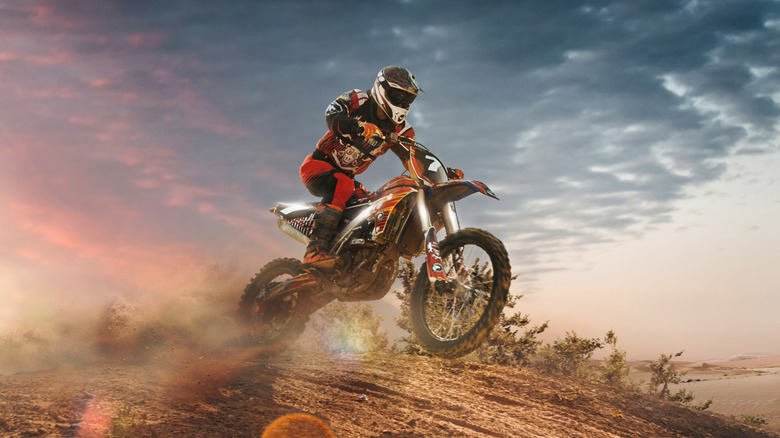
Artur Didyk/Getty Images
By Brad Hill/
Racing a dirt bike, just like racing any vehicle, is a lot more than riding around a track. There’s a lot of physical and mental preparation that goes into it: Professional MX racers don’t simply show up to the track and pull back the throttle, they practice day in and day out, and they ride like every practice lap is a real race. When they’re not on the track, they’re in the gym maintaining enough muscle to move their bike with ease, or they’re running to keep their endurance up. Riding any motorcycle can be exhausting, but race bikes are especially brutal.
But when there’s a race day fast approaching, racers need to do more than prepare their body and mind. Gear is an important part of riding, and crucial when you’re trying to win a trophy. Accidents happen all the time, so it’s important to get a dirt bike helmet, goggles, boots, gloves, and chest piece. Most importantly, though, racers need to prepare their bike. There’s a short checklist of things they go through to ensure their dirt bike is in working order and won’t dump out on them in the middle of a race.
It’s best to prepare the bike well before any race. If there are any parts that need replacing, you want plenty of time to install them and run the bike with them. Don’t wait until the day before the race. So, here’s what should you do to prepare your dirt bike for a race.
Fresh tires and tire pressure
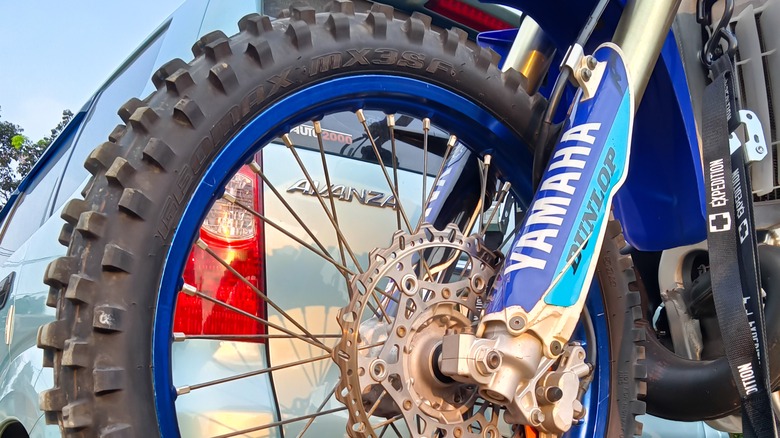
Danz Abilizza/Shutterstock
In the days leading up to the race, you may want to put completely new tires on the bike — front and rear. It’s not always necessary if the current tires aren’t worn down or lack any signs of deterioration, but generally it’s good to start fresh. What are those signs? Missing or damaged knobs, knobs with rounded corners, some discoloration, and cracks throughout the tire. Many riders will ride their tires into the ground before changing them out for new ones.
It’s best to swap them out before they’re a year old, not only for ideal performance but for safety as well. Whether the tires are swapped out or not, you should have a spare wheels set up and ready to go. It’s better to have them and not need them, than need them and not have them. The uninitiated might not realize how big a role tire pressure plays in motocross.
Sure, it’s not nearly as important as other bike components, but it can give you a slight edge over other competitors. Different terrain calls for different tire pressure and when you find the right tire pressure, it becomes night and day. You may want lower pressure if you’re riding on a sandy track. Meanwhile, when the track is more packed together, you’ll want to increase the pressure. Always double check the air pressure on the day of the race to make sure it’s where it should be.
Replace the air filter
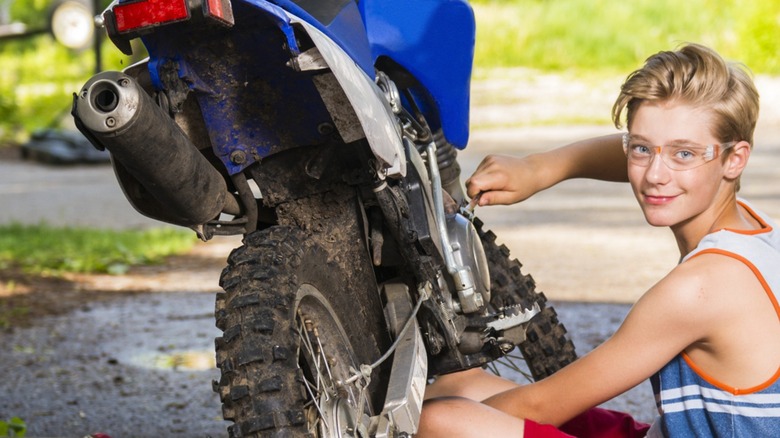
Fertnig/Getty Images
Cleaning is significantly more involved than simply washing the dirt bike. There are some components «under the hood,» so to speak, you want to clean before a race or even replace. Start every race with a fresh air filter: If you enter a two-day race where you’ll have to race two days in a row, it’s recommended that you change out the air filter for a new one before the second day of racing. This is going keep your bike’s performance in tip-top shape.
While casual riders can wait a little longer to replace their air filter as long as they’re cleaning it regularly, replacing it right before a race is going to ensure the bike runs smoothly. Once you have the new air filter, evenly apply filter oil to it before placing it in the bike. The oil is going to help the filter accomplish its job of catching contaminants. While you don’t want to use too much oil, more is better than not enough.
Fluid levels
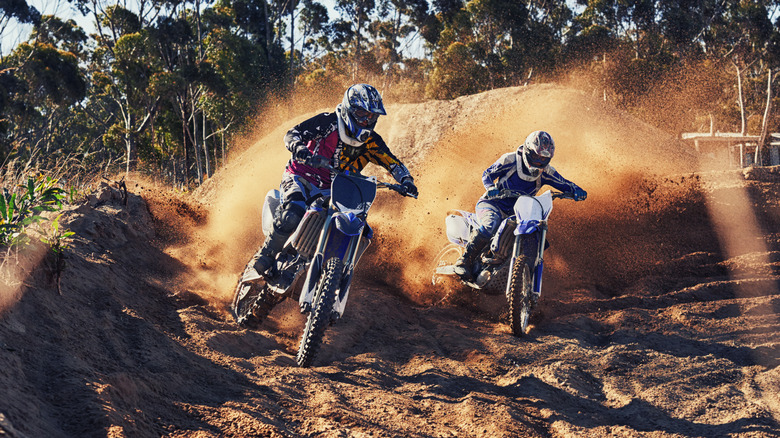
Peopleimages/Getty Images
If a motocross racer doesn’t want to injure themselves in the corners or go off track, they need use their brakes — and where there are brakes, there is brake fluid. When it comes to front brakes (dirt bikes have front and rear brakes), the fluid should be full and clear. The front and rear brakes are equally important while riding, but some racers ride one set of brakes harder than the other. If that’s the case, you can bleed the brakes and completely replace it with fresh fluid, ensuring optimal performance. A good rule of thumb to follow is for racers to bleed their brakes every 20 hours of riding time, while casual riders can hold off on doing it every 40 hours.
Oil should be checked regularly, as is the minimum maintenance requirement for any vehicle with an internal combustion engine (ICE). There are a few aspects of the oil that should be checked prior to a race: The level and color. If oil levels get too low, it can damage the engine and that won’t be cheap to repair. Fresh oil is brown or amber colored and only gets darker as time goes on. If it’s a darker shade that’s close to black, it’s time to give the motorcycle an oil change. Without changing the oil when needed, you run the risk of your dirt bike not riding as fast as it can go and overheating the engine. Don’t neglect the fluids in your bike.
Possibly a fresh top end
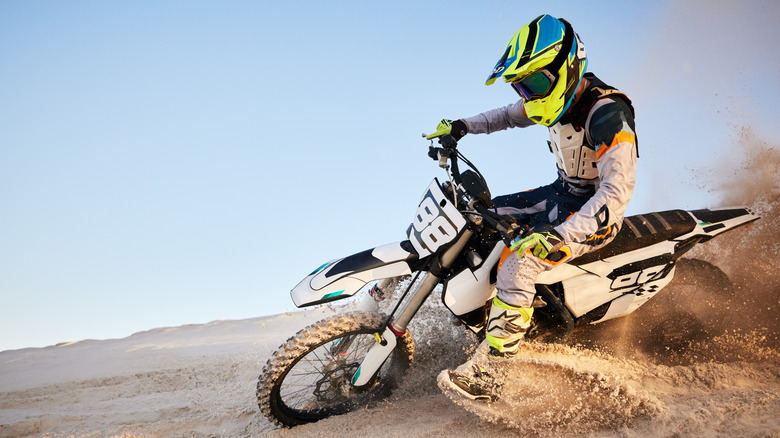
Peopleimages/Getty Images
According to Cody Tithof — former professional MX racer out of Perris, California — you want to «have a fresh top end put into the motor» in the days leading up to the race, but stresses that it’s «only needed if the bike has too many hours on the current top end.» There’s not a lot of guesswork for experienced riders when figuring out if they need a new top end. If you know what to look out for, there are some signs that tell you it’s time to have a look at the engine.
One such sign is a lack of power. When you’ve been riding the same bike for a good amount of time, you know how it should feel when it’s running optimally. So when you notice there’s not as much «oomph» when you have the throttle pinned back, it’s probably from the pistons being worn down. Also be aware of how many kicks it takes to start the bike. If it takes more than four kicks, there’s likely something wrong with the top end. Different climates can have an effect on the time it takes to get a dirt bike started. More than a dozen attempts, and it’s time to look at the engine’s top end.
Dirt bikes by nature are noisy machines, but there’s a good noise and a bad noise. When it sounds like metal is clanking together or rattling, that’s a bad noise and a sign that certain parts are worn out.
Maintenance checks for the day of the race
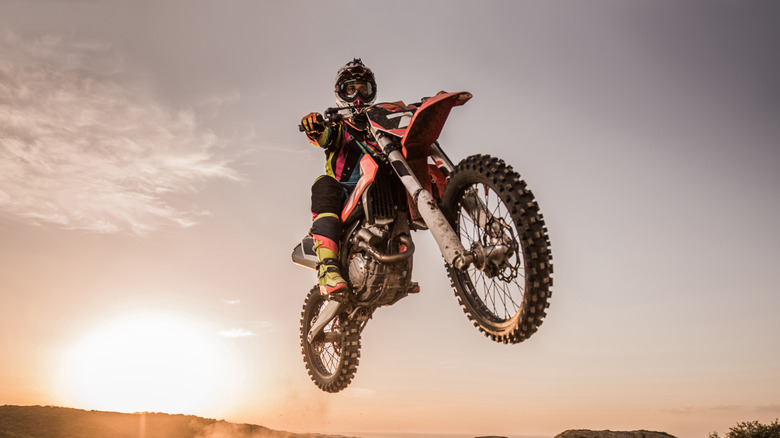
Skynesher/Getty Images
The day of the race is a stressful time. Not only are racers concerned with their performance on the track, but there’s also a long checklist of tasks to complete before they round their first berm. There’s a lot of double-checking that takes place. Double check the tire pressure and double-check that bolts on the bike are tightened. You want to ensure that the spokes are tight not only on the front and rear tires, but also on the spare wheels.
Warming up the bike before riding a few practice laps is going to let competitors hear how the bike sounds, giving a good indication if any last minute tweaks are required. It should also be warmed-up before each race because double-checking is never a bad idea. The chain needs to be adequately lubricated. This should be done before race day but it’s worth another check. Same with the air filter, ensure it’s properly lubricated.
Before each ride, including practice and race, look over all the parts again to ensure that everything is running smoothly. There’s nothing worse than being in the middle of a race when something avoidable becomes unavoidable.